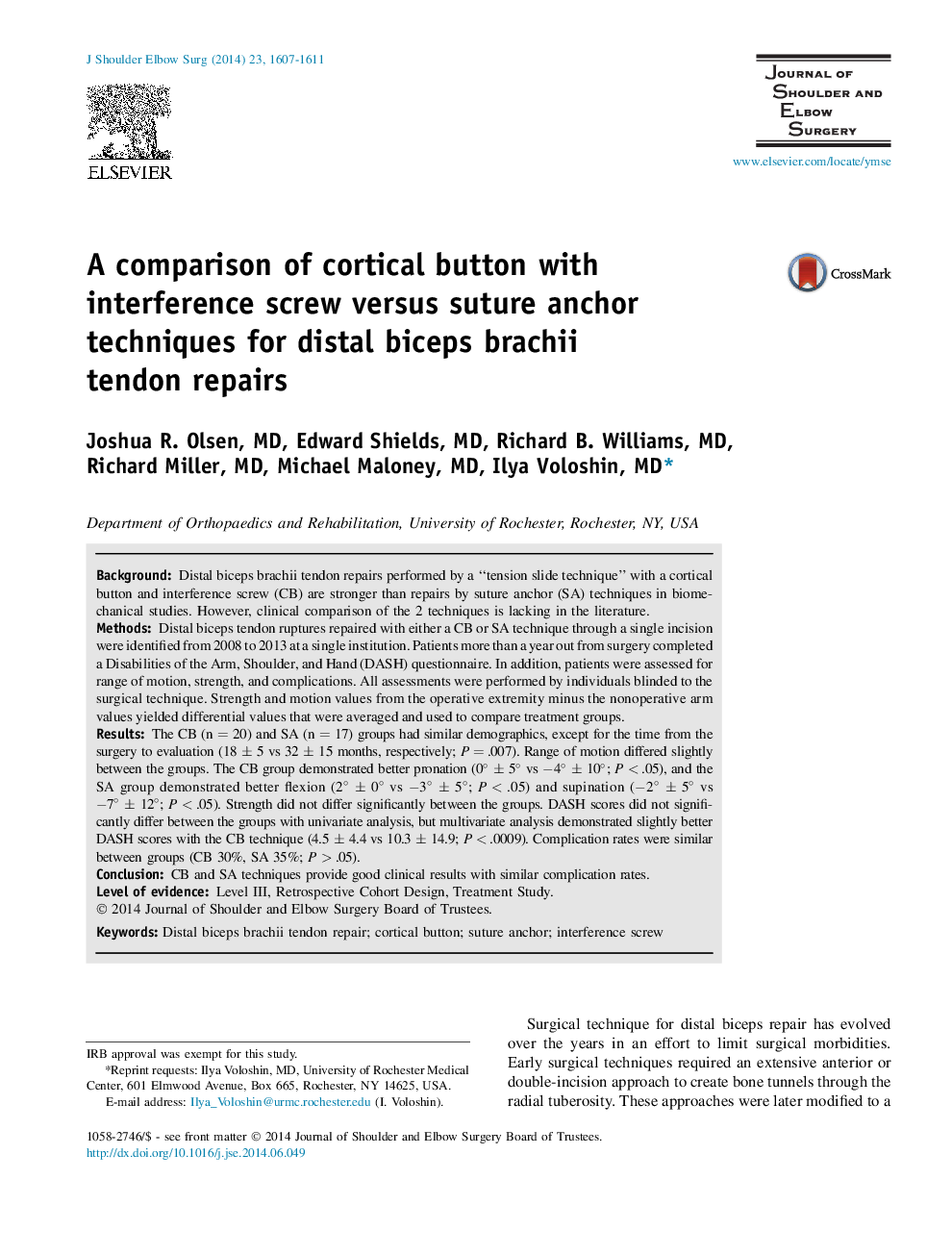| کد مقاله | کد نشریه | سال انتشار | مقاله انگلیسی | نسخه تمام متن |
|---|---|---|---|---|
| 4073942 | 1266995 | 2014 | 5 صفحه PDF | دانلود رایگان |
BackgroundDistal biceps brachii tendon repairs performed by a “tension slide technique” with a cortical button and interference screw (CB) are stronger than repairs by suture anchor (SA) techniques in biomechanical studies. However, clinical comparison of the 2 techniques is lacking in the literature.MethodsDistal biceps tendon ruptures repaired with either a CB or SA technique through a single incision were identified from 2008 to 2013 at a single institution. Patients more than a year out from surgery completed a Disabilities of the Arm, Shoulder, and Hand (DASH) questionnaire. In addition, patients were assessed for range of motion, strength, and complications. All assessments were performed by individuals blinded to the surgical technique. Strength and motion values from the operative extremity minus the nonoperative arm values yielded differential values that were averaged and used to compare treatment groups.ResultsThe CB (n = 20) and SA (n = 17) groups had similar demographics, except for the time from the surgery to evaluation (18 ± 5 vs 32 ± 15 months, respectively; P = .007). Range of motion differed slightly between the groups. The CB group demonstrated better pronation (0° ± 5° vs −4° ± 10°; P < .05), and the SA group demonstrated better flexion (2° ± 0° vs −3° ± 5°; P < .05) and supination (−2° ± 5° vs −7° ± 12°; P < .05). Strength did not differ significantly between the groups. DASH scores did not significantly differ between the groups with univariate analysis, but multivariate analysis demonstrated slightly better DASH scores with the CB technique (4.5 ± 4.4 vs 10.3 ± 14.9; P < .0009). Complication rates were similar between groups (CB 30%, SA 35%; P > .05).ConclusionCB and SA techniques provide good clinical results with similar complication rates.
Journal: Journal of Shoulder and Elbow Surgery - Volume 23, Issue 11, November 2014, Pages 1607–1611
